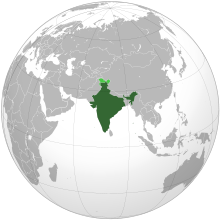India: Targeted Killings As A Counter-Naxal Strategy – Analysis
By IPCS
By Medha Chaturvedi
Every state has different response mechanisms to violent conflict and what works for one, may not necessarily work for the other. In this commentary, the author wishes to explore if targeted killing or leadership decapitation as a counter–measure under a broader strategy for tackling LWE in India would work.
Targeted Killings

For the purpose of this commentary, targeted killings or leadership decapitation is defined as counter measures by the state, which involves identifying top leadership in a militant outfit and specifically pursuing them in a planned way during the course of general operations. Since the killing of Osama Bin Laden by the US forces in Abbottabad, Pakistan last year, this option has been discussed as a possibility in tackling LWE in India.
For targeted killing to be explored as a viable option it is necessary to define the nature of the militancy. This method works best in an ideology-motivated terrorist organisation which looks towards a charismatic leadership for support and stimulus. In such an organisation, a leadership vacuum may lead to an eventual collapse or fragmentation of the entire structure, thus, reducing the threat it poses. However, if the militancy is an insurgency inspired by people and has a multi-level leadership structure, this may not work so well.
The Indian Case
In the context of LWE, the confusion in categorising LWE as terrorism or insurgency plays into the counter measures as well. While the Indian government has categorised CPI (Maoist) as a terrorist outfit, LWE is essentially seen as an insurgency which is a manifestation of long drawn deprivation of the people of the affected states. Here, the motivating factor is not essentially social disparity and thus, a clear top-down leadership does not exist. Therefore, if the Indian state decides to take on the top leadership of CPI (Maoist) without addressing the basic issues, being a mass movement in under-developed areas, new leaders will continue to come up from time-to-time.
Another option is to constitute a specialised hit squad, which deals exclusively with internal security matters. If India does opt for creating a hit squad, as a signatory to the Geneva Convention the squad cannot comprise military personnel. Specially trained forces like Shin Bet in Israel will have to be deployed for this purpose. In a democratic republic, there may never be a parliamentary consensus on raising such a squad.
The legality of this method is another aspect which needs to be critically assessed before proceeding with leadership decapitation. If the government accepts it as terrorism and declares it as such, then under the provisions of the international declaration on war on terror, of which India is a part, the state needs no legal sanction in killing the top leadership. To categorise LWE as terrorism, though, will not be an easy task.
However, if it is treated like an insurgency and declared as such, going after the top leadership would amount to extra-judicial killings for which the state will be answerable. What needs to be borne in mind is that in going after the leadership, the government should not be breaking the rule of law which, in an insurgency would be difficult to ensure unless legislation is passed as such.
A political decision is, therefore, needed for clarity on the issue. In Sri Lanka, President Mahinda Rajapaksa, instead of going only after the commander of the LTTE, Prabhakaran, went after the entire organisation, branding it a terrorist outfit. The military hand in wiping out the LTTE completely was not checked at all in Sri Lanka and an all-guns-blazing approach was taken. That raises the question: is India ready to take the same approach in case of LWE?
Would it work?
The aim of any counter measure in a violent conflict is to ensure that it reaches its objective and is not counterproductive. Therefore, the first thing that needs to be done is to define LWE in clear words as an insurgency or terrorism so that once the nature of the beast is clear, the prognosis can accordingly be made. In the context of LWE, it is unlikely that only targeting the top leadership may work as it is a short-term means for a short-term gain. A two-pronged strategy needs to be adopted to deal with LWE. After surprise attacks on the top leadership, a power vacuum will exist for a small period of time wherein violence may decrease. This time must be used by the Central Paramilitary Force and state police to create an impenetrable security cover in these isolated areas. Under this cover, the government must carry out basic development activities which are in line with the expectations of the local population and provide them with amenities like water, electricity and hospitals. This area should be kept insulated for a certain amount of time before moving to the next district. This is a long-term solution, which requires a national consensus and political will of the country’s leadership as a priority issue, irrespective of party politics. Visible development must take place, otherwise leadership decapitation will be seen as a repressive tactic by the state and may turn out to be counterproductive.
Targeted killings cannot work in an insurgency, if they are seen in isolation as an end goal when developmental issues are at the crux of the matter. They have to be seen as a means to achieve the end of an insurgency.
Medha Chaturvedi
Research Officer, IPCS
email: [email protected]
